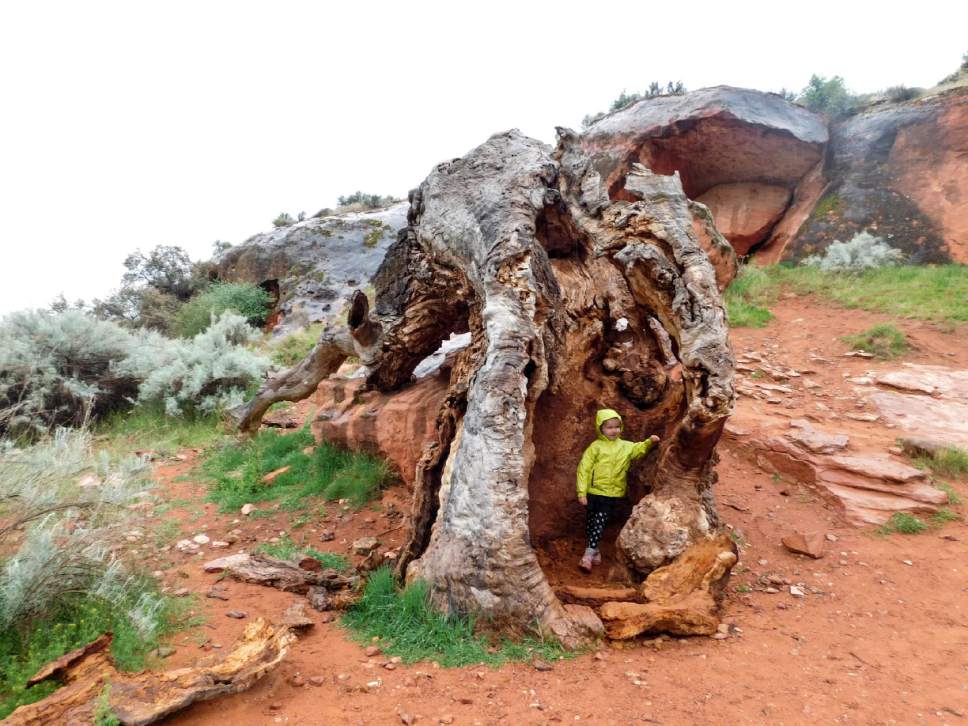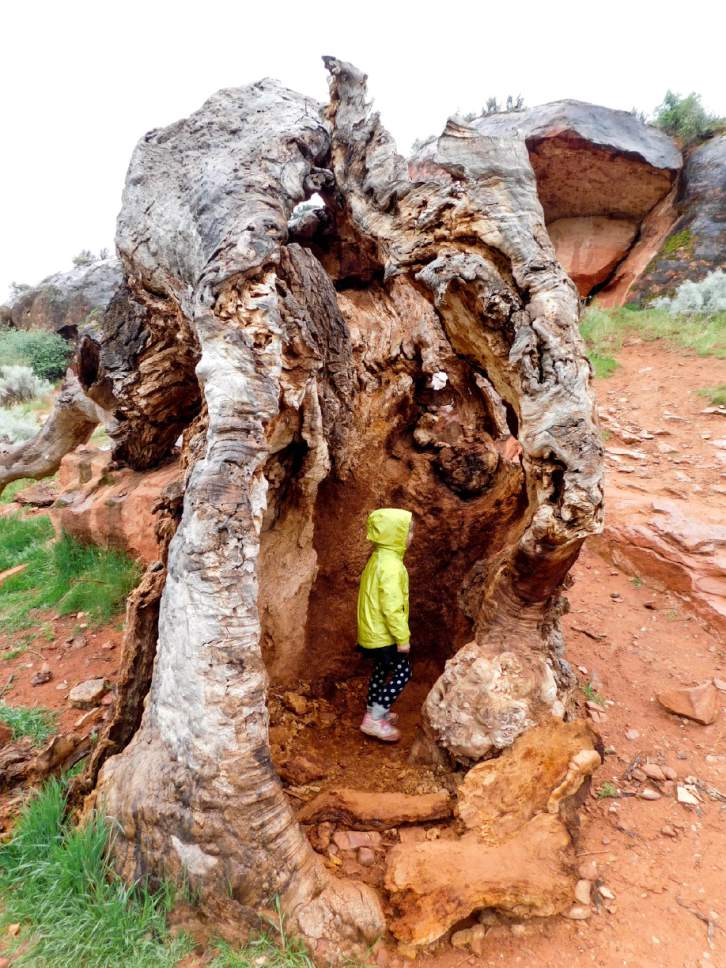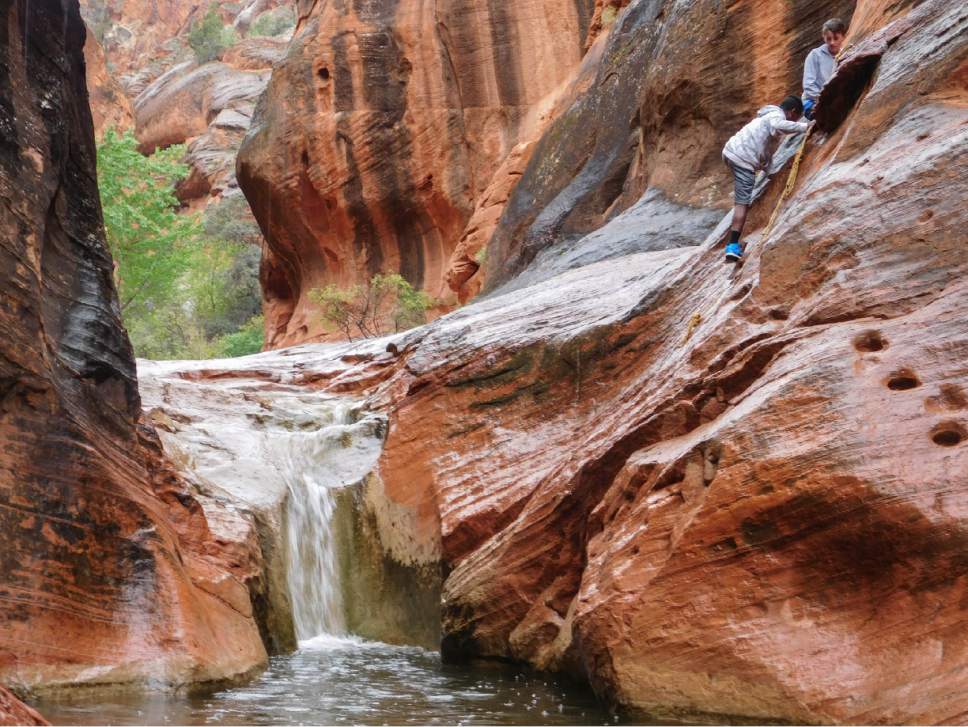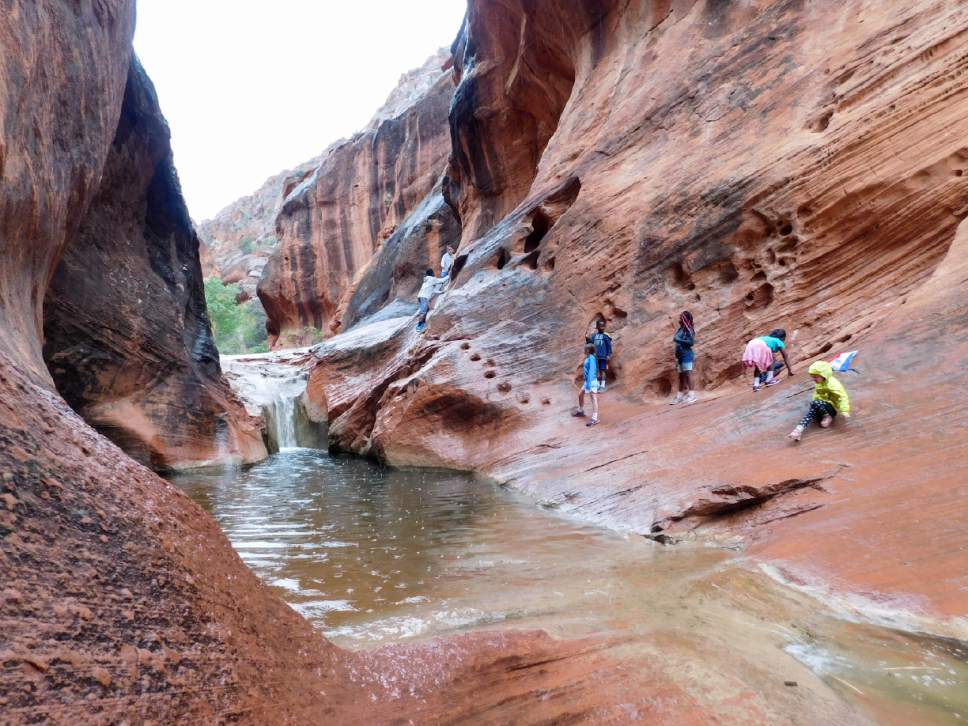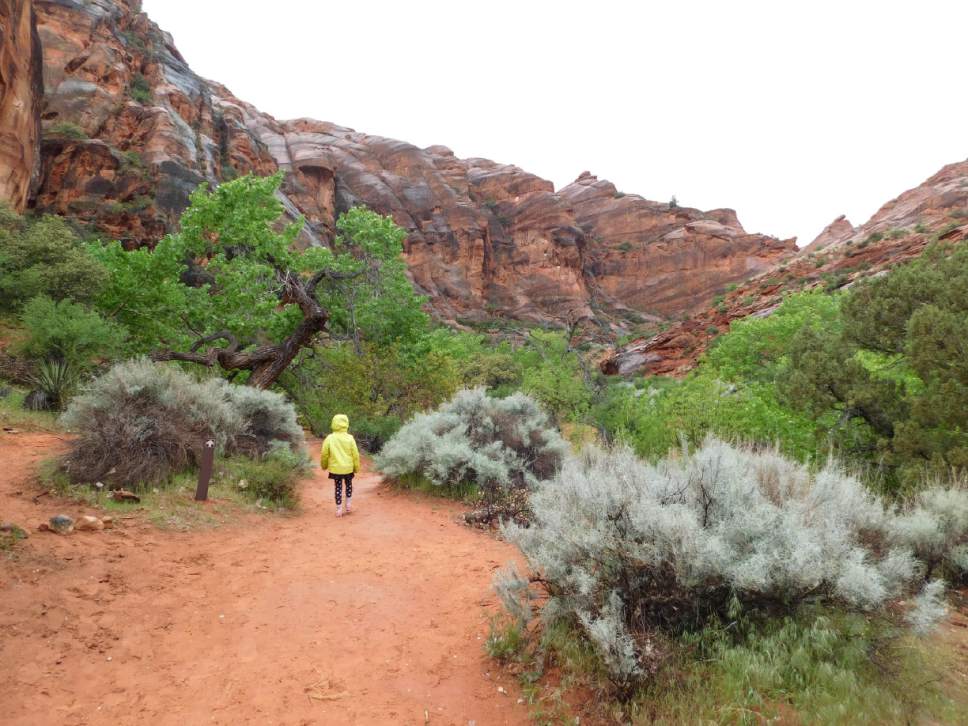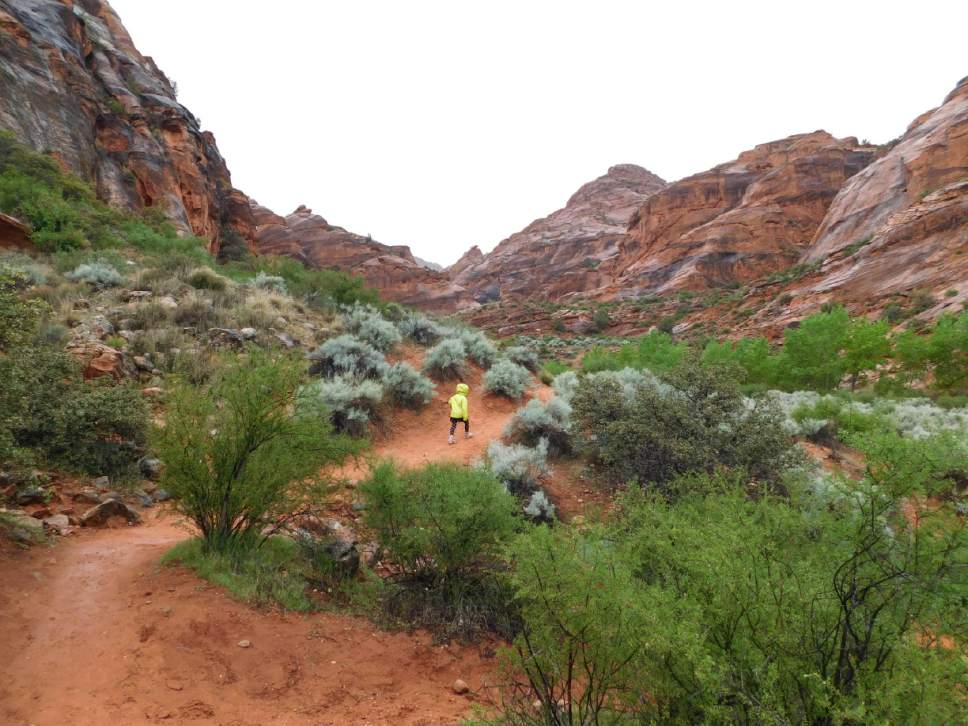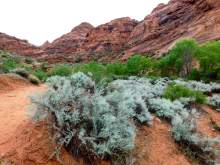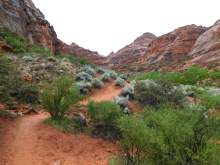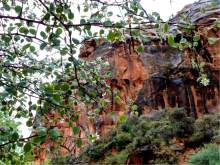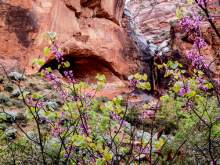This is an archived article that was published on sltrib.com in 2017, and information in the article may be outdated. It is provided only for personal research purposes and may not be reprinted.
St. George • Not far from the throngs of tourists in Zion National Park, fins and spires of orange sandstone rise quietly from the sandy bottoms near the Virgin River. Redbuds frame a waterfall pouring into a slickrock basin, and rare desert tortoises emerge from the sand to eat meals of wildflowers that will help them survive the torrid summer to come.
This is Red Cliffs Desert Reserve, where April is the kindest month.
The 62,000-acre reserve north of St. George protects Utah's sliver of the Mojave Desert. It provides habitat for plants and animals that are rare to Utah and usually live farther south — especially for reptiles such as the chuckwalla, gila monster and desert tortoise.
It's also staggeringly beautiful and less crowded than nearby Zion.
But where elevation drops south of the Pine Valley Mountains, summer comes early and ferociously. To see Red Cliffs at its finest, visit soon.
As of early April, wildflowers were coming into bloom in the Sandstone Mountain area south of Leeds, and many unopened buds remained. On a rare day of constant, gentle rain, water rushed through Quail Creek, northwest of Harrisburg, and the smell of sage wafted over the nearby Red Reef trail.
Spring also is when the reserve's famed Mojave desert tortoises are most active. The tortoises, listed by the federal government as "threatened," spend most of their lives underground, in burrows. But in spring, they forage for plants and stock up on water their bodies can store during the coming dry days of summer.
A number of tortoises recently were transplanted from a housing development to near the reserve's Babylon trailhead south of Leeds, said Dave Kiel, recreation planner for the U.S. Bureau of Land Management. Biologists feared the move would end badly for the tortoises, as the Babylon area was rated low-quality habitat.
"In reality, they're thriving," Kiel said. "It was amazing."
A Washington County sheriff's deputy who checked my permit at the reserve's Sand Cove camping area agreed with Kiel that the Babylon area was the best spot to look for tortoises and said he saw them frequently. I was visiting early in their foraging season and didn't see one. Kiel recommended looking for mounds of disturbed, soft soil next to rock walls. The tortoises are roughly the size of a football and are most active when temperatures are below 90 degrees.
Don't approach or handle tortoises, reserve employees warn. Stress may cause the tortoise to pee, which could leave it at risk of dehydration in a land where every drop of water counts.
If you can't find a tortoise, spring is a great time to enjoy other wildlife, like birds, lizards and rabbits. For flora, look for globemallows, marigolds and cactus blooms.
And enjoy the opportunity to explore the trails, canyons and rock formations while it's not ungodly hot. The Quail Creek waterfall near the Red Cliffs campground, now gushing, typically dries up in early summer; the sand at Sand Cove may soon be too hot for hiking.
The brevity of spring's beauties makes them all the more exciting.
Twitter: @erinalberty If you go
For more information about Red Cliffs Desert Reserve, visit redcliffsdesertreserve.com.




